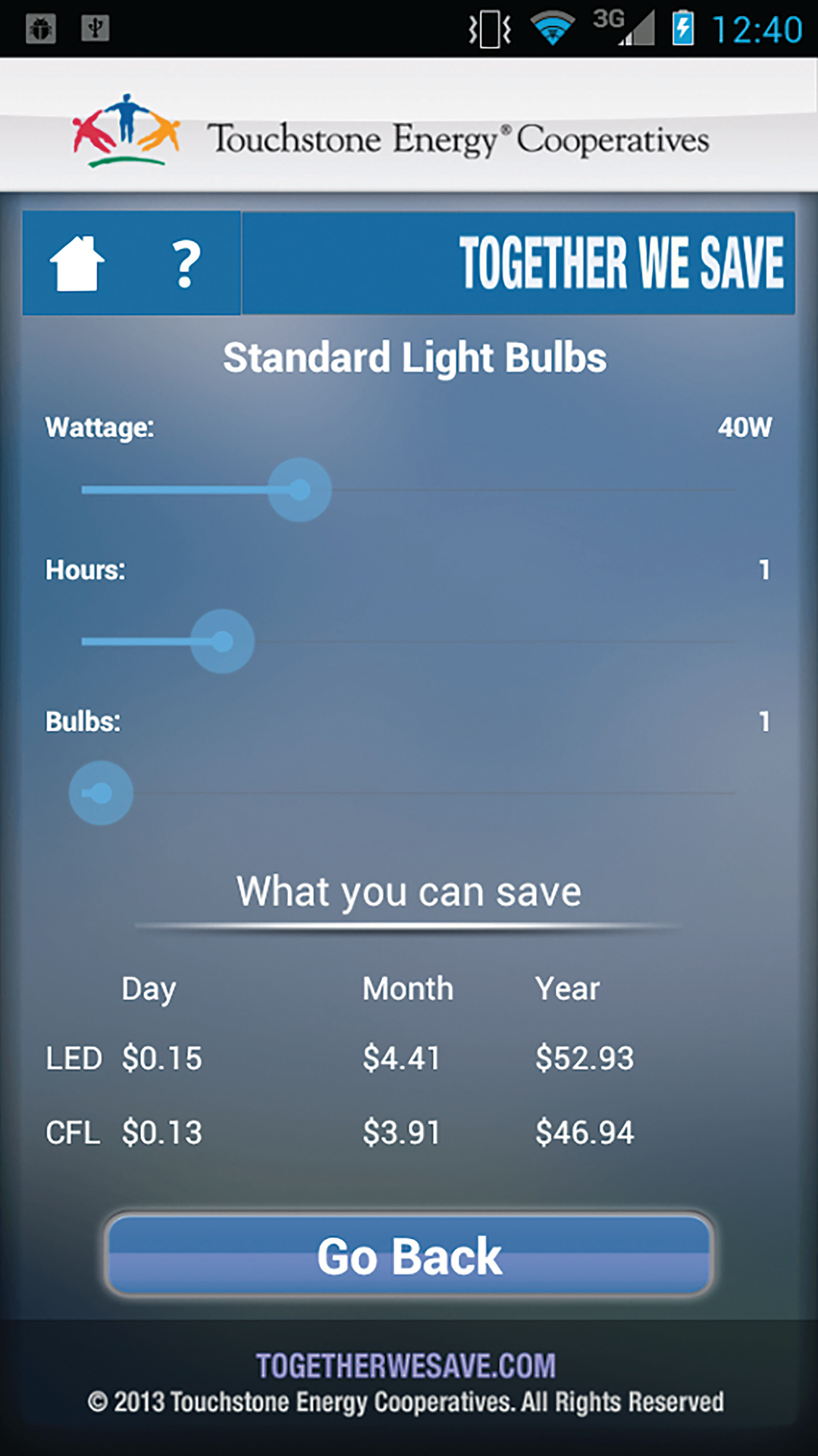Do they really work?
Q: I’m interested in smartphone apps that will help track my energy use and provide tips for how to reduce it. Do you have any suggestions?
A: There are several smartphone apps that can help you determine how energy is used in your home. Energy use apps can also provide information that helps you choose efficiency upgrades that make the most sense for your home.
Here are a few types of smartphone apps you could consider downloading:
Your electric co-op’s app: Many electric co-ops offer smartphone apps that allow you to view recent bills and set high use alerts. Many of these apps will also let you pay your bill through the app, read about any co-op efficiency programs or incentives, compare your energy use to similar homes and learn how the weather may have impacted your energy bill. Visit your co-op’s website to find out if they offer a smartphone app.
Smart thermostat apps: There are a number of smart thermostats on the market from companies like Alarm.com, ecobee, Honeywell and Nest. Smart thermostats can optimize your home’s heating and cooling based on your family’s habits and the weather. If you have one of these smart thermostats, take advantage of the corresponding smartphone app that can give you detailed information about your home’s heating and cooling use.

Energy disaggregation device apps: There are some devices and corresponding smartphone apps from companies such as Bidgely and PlotWatt that analyze electric signals to determine how much electricity appliances are using in your home. With these devices and apps, you can see the energy use of a particular appliance over time. An unexplained jump in energy use could pinpoint a problem.
Apps with energy savings tips: Some apps provide personalized energy tips based on your location, home characteristics and other information that you provide. One example is Touchstone Energy’s “Together We Save” app, which provides energy savings tips for the home, as well as energy use calculators.
Additional apps that can help you track and understand your energy use are becoming available each day. Read reviews from other users to learn which apps have been most beneficial. Keep in mind that while these apps can give you an idea of how much energy you are using, which areas of your home are using the most energy and tips for reducing your use—it’s up to you to evaluate the information the app provides. One thing to remember is that apps often only look at a single fuel use, so if you have an all-electric home, the app could be quite conclusive—but if you have appliances fueled by natural gas or propane, the information will be less thorough.
With trend data from an energy app, you should be able to pinpoint large energy uses in your home. For example, if heating and cooling are significant draws on your energy bills, investing in weatherization measures or upgrading your system to a more efficient one could have a big impact on your bill. Apps that give you access to real-time information can be a powerful diagnostic tool to help you evaluate the impact of an energy efficiency measure.
A good practice is to sit down regularly to look at trends and changes to your energy bills. Has your energy use increased in the last month? Was the weather significantly colder or warmer? Was your family at home more often because of a holiday? Does your co-op have time-of-use rates, and if so, do you make any adjustments to your energy use to account for those different rates—for example, running your clothes dryer overnight instead of when you get home from work?
If your bill is increasing and you are not sure why, or you want more ideas for how to reduce your energy bills, your electric co-op is a great resource. Your co-op’s energy advisor may be able to sit down with you and analyze your bill, talk about your home’s characteristics and your family’s habits, and provide tips for how to reduce your energy use.
This column was co-written by Pat Keegan and Amy Wheeless of Collaborative Efficiency. For more ideas on efficiency apps and how to save energy, please visit: www.collaborativeefficiency.com/energytips.
Patrick Keegan writes on consumer and cooperative affairs for the National Rural Electric Cooperative Association, the Arlington, Va.-based service arm of the nation’s 900-plus consumer-owned, not-for-profit electric cooperatives. Write to [email protected] for more information.




